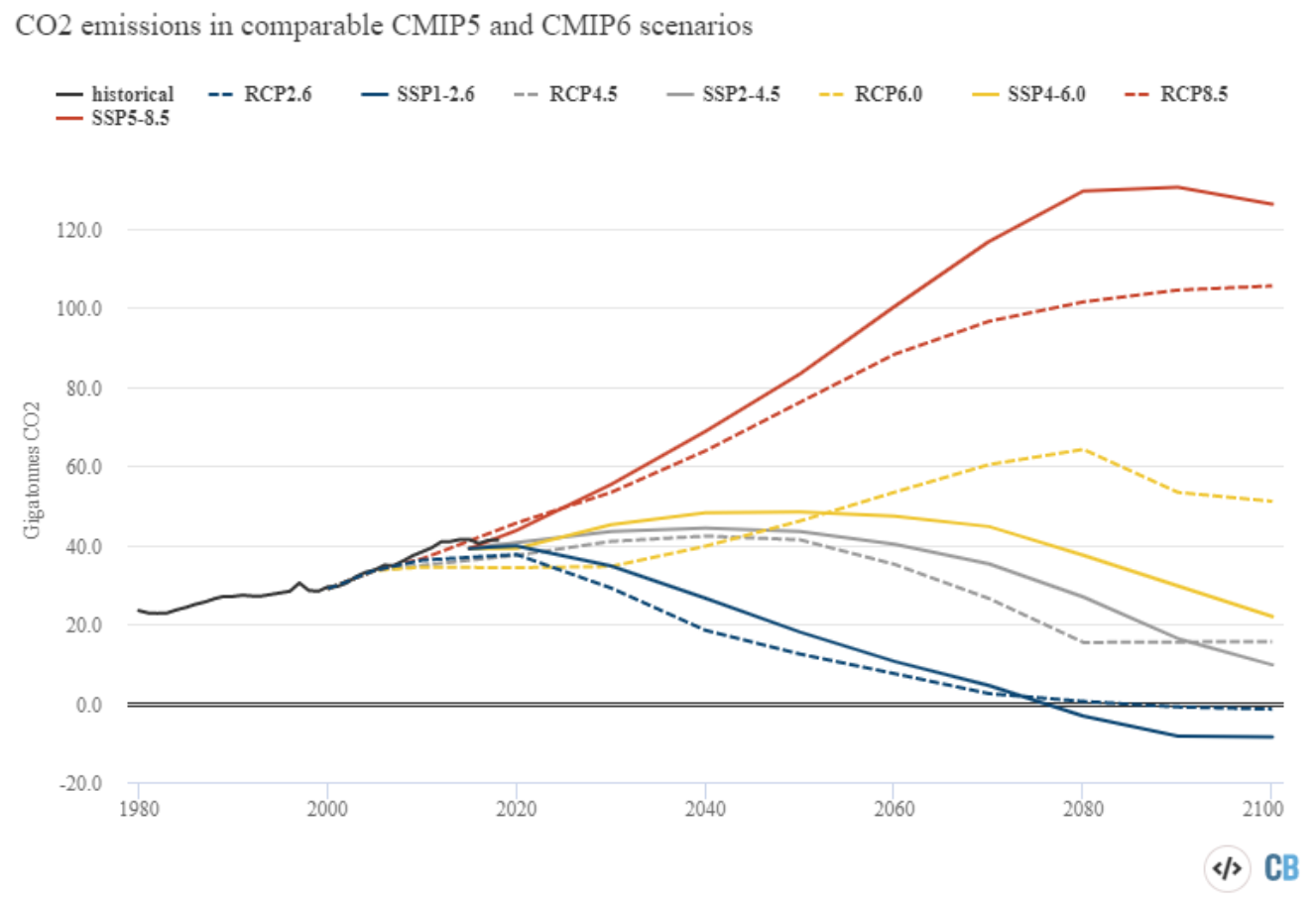UKMO & the Major Feedbacks Omitted from the RCP scenarios for IPCC AR5 (2015)
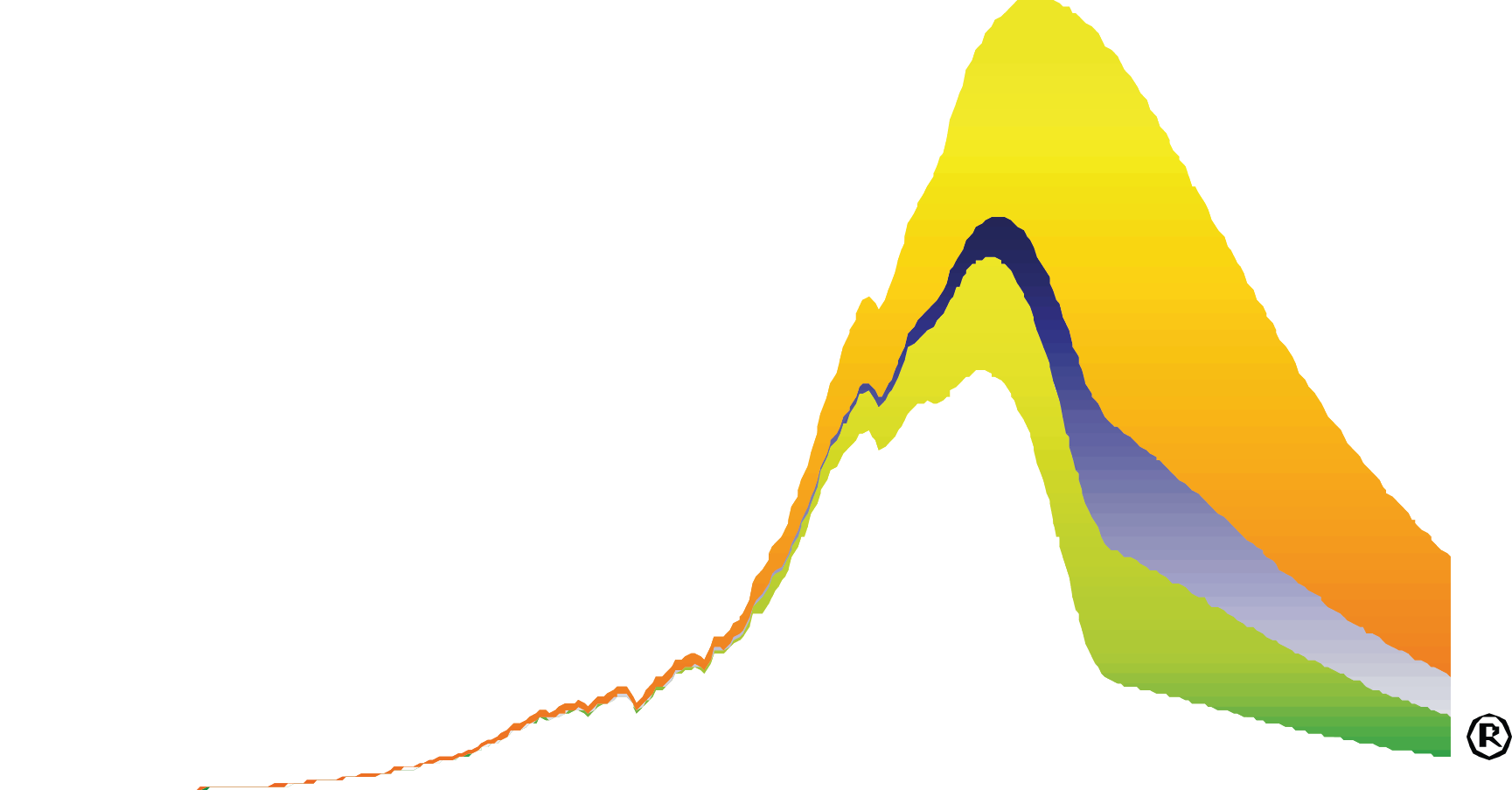 Click logo to return to 'links-page'
Click logo to return to 'links-page'
This document below quotes
[a] UKMO remarks made on the record & under oath to the Environmental Audit Committee (EAC) Enquiries in 2009 and
[b] a document that appeared on the UKMO website before 2013 . . . .
[c] that was removed from the UKMO website during the EAC enquiry (never explained) . . .
[d] the UKMO untruthfully telling the Environmental Audit Committee Enquiry that, "all feedbacks are in our climate modelling".
The UKMO later admitted that feedback
effects had been ommited from its climate modelling.
This was also later admitted by DECC.
This document [b] was part of
GCI's evidence submitted to the EAC Enquiry in June 2013.
Click the image to go full size
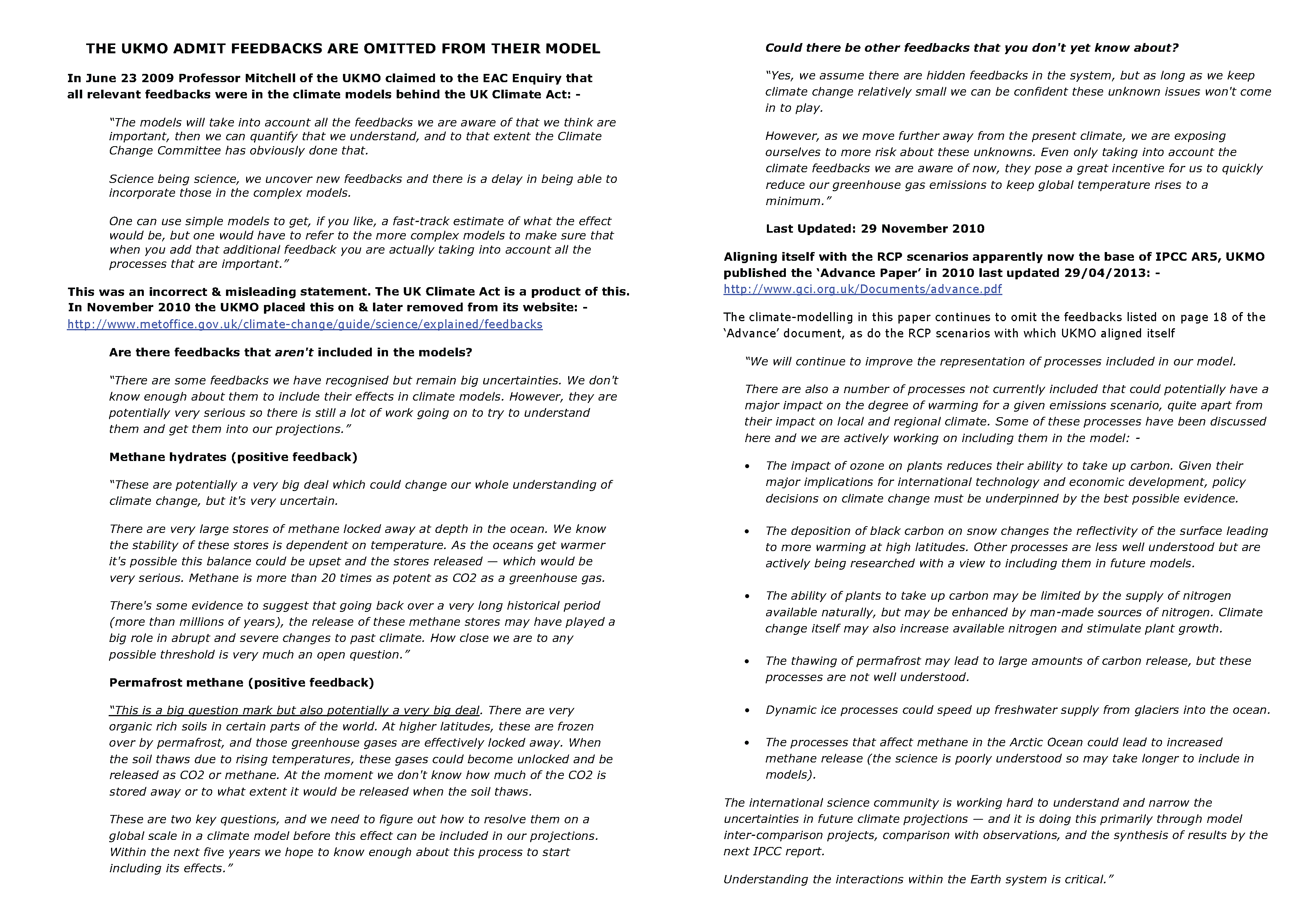
*************************************
In spoken evidence to the Environmental Audit Committee (EAC) in 2013 UKMO
denied that they had omitted any feedback effects from the climate modelling.
As research undertaken since 1991 with results being evaluated for the All Party Parliamentary Group on Climate Change
after 1995,
GCI rebutted their denial.
In 2013, Julia Slingo UKMO's Chief Scientific Office at the time, appears either [a] deliberately to mislead the Committee or perhaps [b] she was misled into
believing by her modellers at UKMO that because 'Coupled Carbon Cycle Modelling' (CCCM)
had been included in the models, this meant
that all feedbacks
had been included in the models.
If [a] Julia Slingo deliberately misled the committee.
If
[b] her belief is false due to being deliberately misled by the modelling group within and beyond the UKMO.
Either way, the EAC - indeed the whole IPCC AR5 preparation - was seriously misled by evidence from the UKMO
(as is now plain for all to see)
on this most serious of all matters - the potential extinction of life on earth.
CCCM is 'carbon-only' & simply means some guesstimates of the future potential strength of CO2 sinks
were included.
As is clearly visibile, the three models vary significantly but in all four scenarios the UKMO (HadCrut) runs are in all cases the largest.
However, none of this means that 'all' feedbacks are included. Nor does it even remotely begin to explain why the RCPs (introducing the Permian Extinction (PA))
replaced the SRES scenarios in 2010, raising atmospheric CO2 concentrations from a moelling maximum of 1000 PPMV to ~2000 PPMV (RCP 8.5).
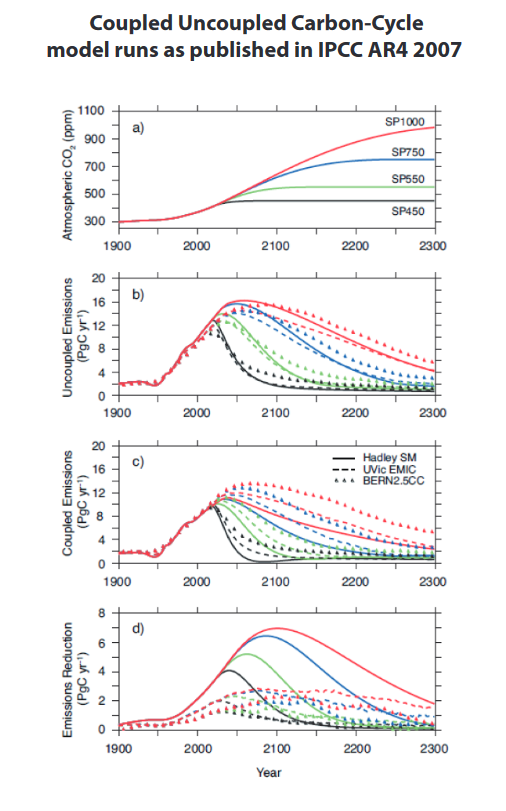
Quite obviously the major feedback effects ommitted are *not* covered and the full reply
from Julia Slingo,
UKMO's chief scientific officer at the time, is obviously
and very significantly misleading (whether deliberately or not).
This CCCM is certainly not the *full earth system* modelling they claimed at the time.
“We have, as I think has already been made clear for the (IPCC's) fifth assessment report, entered the fifth assessment
with a full earth system model that includes feedbacks associated with the terrestrial carbon cycle.
It includes dynamic vegetation, so this is the long-term changes in forests and shrub land and so on,
ocean bio-geochemistry and interactive atmospheric chemistry.
She conspicuously added: - “we have probably contributed more model simulations than virtually any
other group in the world, so we take the IPCC process very seriously.”
UKMO then removed its webpage in
September 2013 and it was not visibly archived.
UKMO have subsequently ignored questions about who took this decision and for what reason.
Department for Energy and Climate change (DECC) admits feedback omissions in 2016
However, feedback omissions were all admitted by DECC in 2016 (before is was closed down that year).
The RCP scenarios and IPCC 5th Assessment Report (AR5)
Whatever they said then or say now, it is perfectly obvious that the RCP spreadsheets published internationally
from 4 countries *in 2010* (now archived at IIASA) did not included the above feedbacks.
Moreover - as can be seen below - it is also obvious that the attempt after the fact to make RCP 8.5 *not equal*
the Permian Extinction
(as pointed out by Nature Magazine)
led to truly ludicrous results
The RCPs were the primary basis of preparations for IPCC 5th Assessment and its Summary for policy-makers,
largely led by the UKMO, as Julia Slingo's reply made clear.
The lowest of these was RCP 2.6 for two degrees,
which is largely the same as the UK Climate Act of 2008. & was already outdated in 2013 as emissions were already
higher
.
IPCC AR5 was published in November 2015.
The 1.5°C target in the UNFCCC's Paris Agreement in December 2015.
This and the urgency of this,
was in no way anticipated or prepared for by UKMO & its colleagues.
The ludicrous result of UKMO et al denying that feedbacks had been omitted from the climate-modelling
during the preparation of IPCC AR5, was this attempt to reverse-engineer feedbacks onto scenario RCP 8.5
after the fact as represented by this IPCC chart published in 2015
as AR5 was published.
(Click image to enlarge).
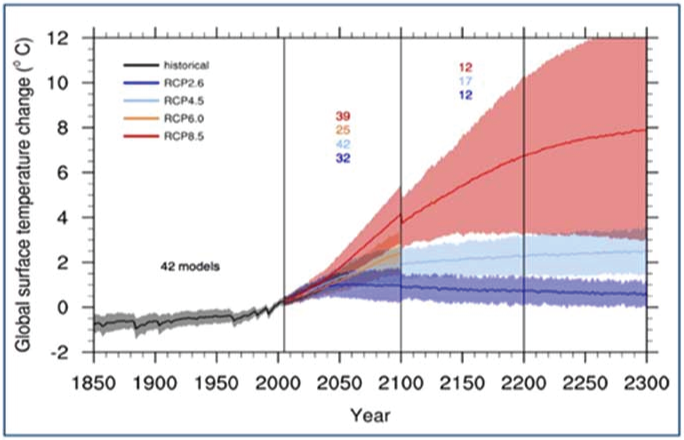
Here is this 'final' IPCC result analysed by GCI.
(Click image to enlarge).
UKMO et al published the RCP 8.5 carbon-emissions/concentrations scenario shown below.
Radiative Forcing (≈ temperature) was projected as 12.5°C; CO2 concentration as 1,962 ppmv by 2200.
Nature magazine pointed out that this was equivalent to the Permian Extinction when 95% of life-forms died.
Temperature rise 'adjusted' to somewhere between 12.5°C & 2.5°C
In IPCC 5th Assessment (AR5 2015), temperature rise had been 'adjusted' to somewhere between 12.5°C & 2.5°C by 2500!
This is a vividly vast level of ‘uncertainty’. It came from the Coupled-Model Intercomparison Project (CMIP).
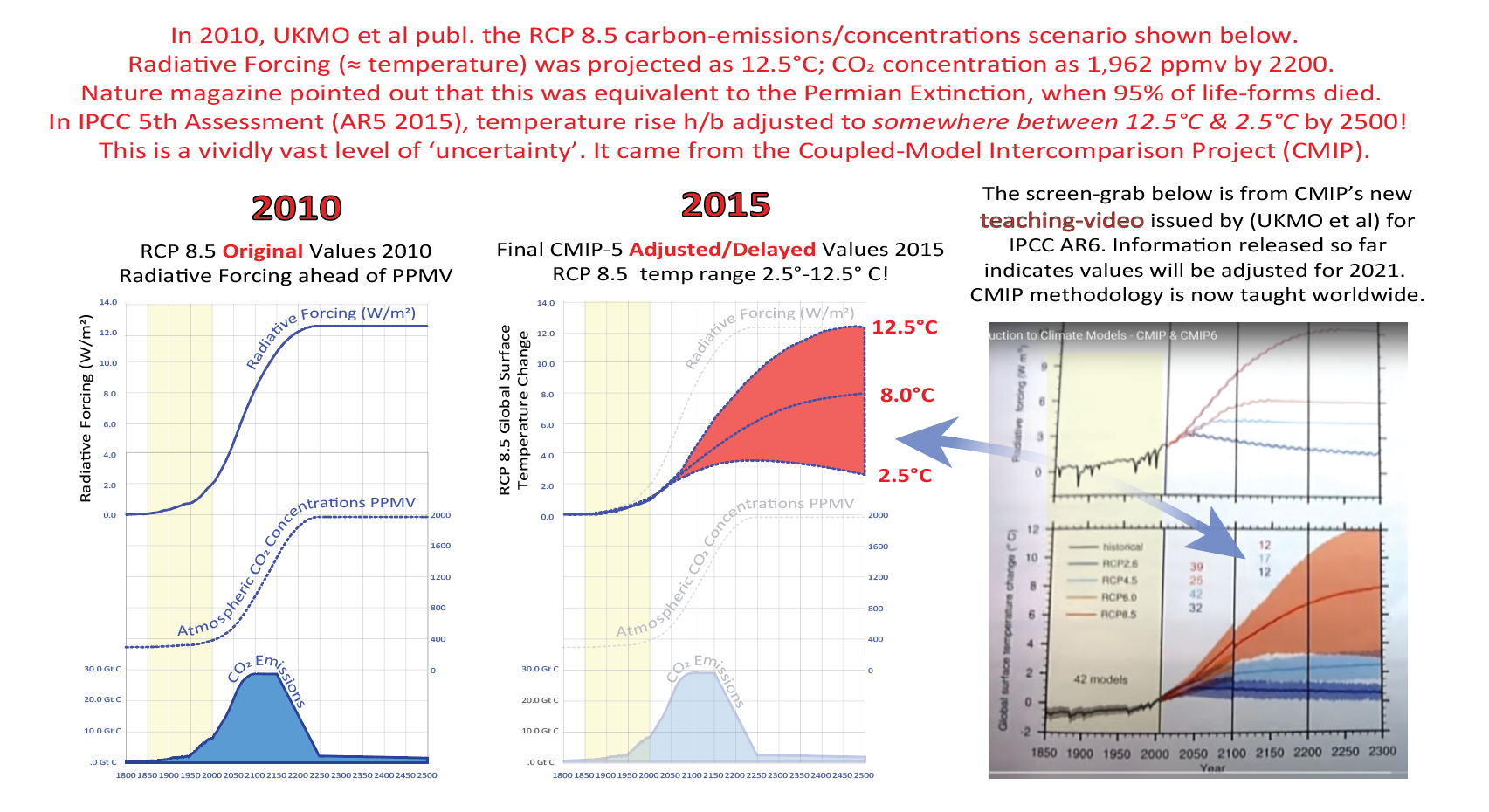
Here it is analysed by Peter Carter.
(Click image to enlarge).
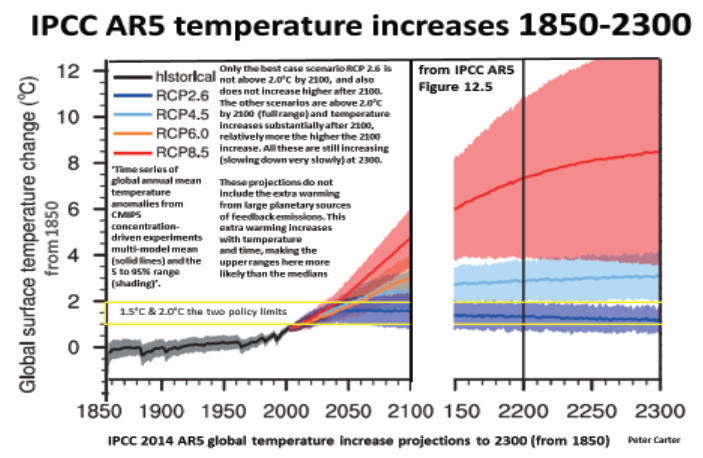
And here it is again as the basis of future work in the fortchcoming IPCC AR6
(Click image to enlarge).
